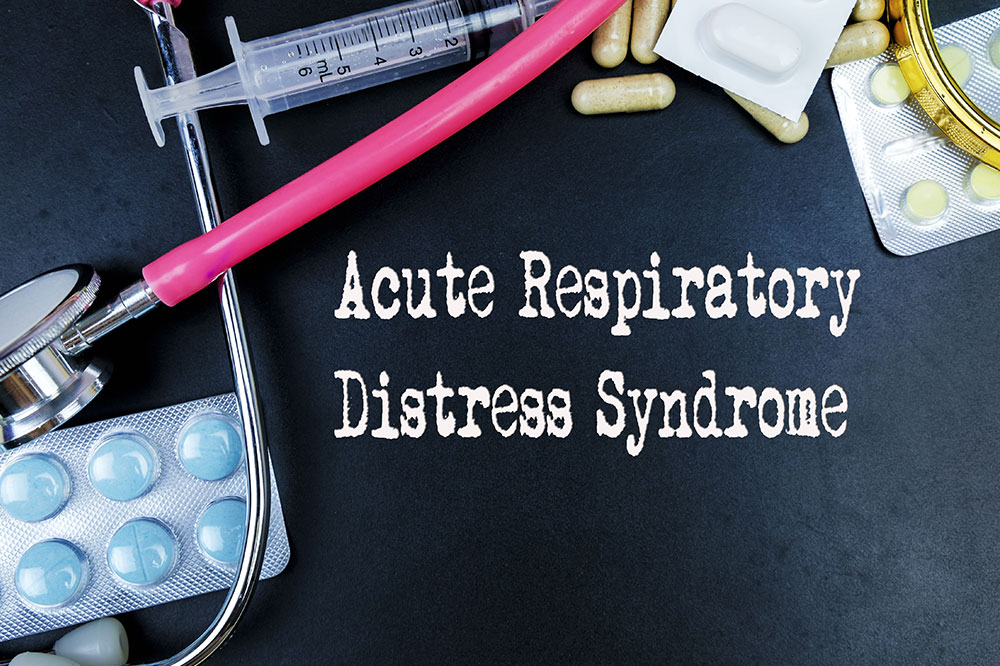
ARDS – Symptoms, causes, and management options
Acute respiratory distress syndrome (ARDS) is a lung condition resulting in low blood oxygen. It is brought on by serious injuries, sepsis, pneumonia, and other lung-related illnesses. ARDS typically manifests within a few hours to a few days, depriving organs of oxygen and causing shortness of breath. Those with ARDS may require medical treatment and assistance to breathe, so it is important to recognize warning signs and seek immediate help.
Understanding ARDS
Acute respiratory distress syndrome, or ARDS, develops when fluids accumulate in tiny air sacs known as alveoli. This stops the lungs from taking in enough oxygen, resulting in hypoxemia—extremely low blood oxygen levels. As a result, other organs like the brain, heart, kidneys, and stomach cannot receive the oxygen they need to function. ARDS is common in medical facilities in patients undergoing treatment for an illness or trauma. One should seek immediate assistance if they experience trouble breathing.
Symptoms
The severity of ARDS symptoms can vary depending on the underlying cause. However, one may experience the following symptoms:
- Cough and chest pain
- Blue fingernails and lips due to low blood oxygen
- Extreme tiredness and muscle fatigue
- Confusion
- Severe shortness of breath or breathlessness
- Rapid and labored breathing
- Rapid heart rate
Signs of sepsis can also be observed if one is dealing with a severe infection. Here, one can experience fever and low blood pressure.
Causes
When fluids leak into the air sacs (alveoli) from tiny lung vessels, one can experience acute respiratory distress syndrome. Eventually, oxygen levels in the blood drop when the barrier separating blood arteries and air sacs is damaged. A severe infection in the lungs (pneumonia) or other organs accompanied by widespread inflammation is known as sepsis, the most common cause of ARDS. Other causes of ARDS are:
Aspiration pneumonia: Inhaling stomach contents, like food and fluids, can harm the airways and result in ARDS.
Infectious diseases: Certain viral infections can lead to ARDS.
Other causes: Massive blood transfusions and pancreatitis—a serious pancreatic inflammatory condition—can also lead to respiratory issues.
Major trauma and burns: Accidents and falls can cause direct lung damage, harm other organs, and cause lung inflammation.
Inhalational injury: Exposure to highly concentrated chemical vapors or smoke causes inhalational injuries.
Most people with ARDS are already being treated for another illness that is usually the underlying cause for respiratory distress. They may be particularly if dealing with sepsis, a widespread infection in the bloodstream.
Diagnosis
Doctors may use various tools and methods to diagnose ARDS as soon as they notice the symptoms. The first step is to check oxygen levels and carry out a physical exam. Here are a few additional diagnostic methods usually adopted:
- Chest X-ray to measure lung contents
- Blood test to check oxygen level and determine the severity of ARDS.
- An echocardiogram to check the heart function
Upon observing ARDS-like symptoms, doctors may recommend the following additional tests to rule out other issues:
- A computerized tomography (CT scan) to get more specific details about the airways
- A sample of airway fluids may be tested to determine the cause of the infection
Treatment options
Acute respiratory distress syndrome generally requires immediate treatment in the intensive care unit (ICU). Further, the underlying cause is treated to relieve the symptoms. Doctors may opt for the following measures to minimize complications:
- Sedation to manage pain
- Ventilator support
- Breathing tests to check if it is safe to remove the tube and ventilator
- Prescription options to help prevent clotting, minimize fluid buildup in the lungs, and lower the risk of stress ulcers in the stomach
- Mobility and physical therapy to strengthen muscles
No direct therapy has been shown to improve survival when dealing with acute respiratory distress syndrome, however, but researchers are trying to find better treatment options.
Recovery
Those with ARDS might need to be ventilated for a long duration, starting seven to fourteen days. After this point, physicians may advise surgically inserting a tube into the windpipe through the neck (tracheostomy). Usually, recovering from ventilator support may take several weeks. Once the patient is no longer dependent on a ventilator, the tube can be removed. One will regain most of their lung function and won’t require supplemental oxygen for long. Others may experience muscular weakness and get readmitted to the hospital or undergo pulmonary rehabilitation to regain strength.
Dealing with ARDS requires immediate care and treatment, making it crucial to recognize warning signs and get help. The recovery here also calls for support from doctors, physical therapists, and family members. Expert guidance and adequate support can help one resume their daily activities as soon as possible.




